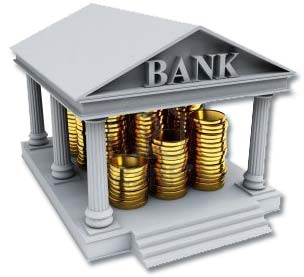Advertising growth to nearly halve to 9.6% this year
The growth rate of the advertising industry is expected to nearly
halve to 9.6 per cent this year at Rs 40,658 crore over the previous year, says
a report.
The growth this year will be largely on account of the ongoing Cricket World
Cup and spends across sectors, it said.
Driven by the massive election-related spends, the advertising industry grew at
an impressive 16.4 per cent in 2014 to Rs 37,104 crore.
"A stable government focused on growth, positive market sentiment, upbeat
consumer confidence will be the leading contributors to growth. The overall
market is expected to grow by over Rs 3,500 crore to reach Rs 40,658 crore, a
growth of 9.6 per cent over 2014," the Pitch-Madison Media Advertising
Outlook said.
The report noted that the biggest contributor to growth will be organic spends
across sectors and the Cricket World Cup.
The report also observed that in terms of absolute numbers the industry
increased by over Rs 5,200 crore in 2014.
Advertising spends by political parties on account of the LokSabha and
assembly elections contributed as much as Rs 2,300 crore, it noted.
"It is significant to note that of 16.4 percent growth, 7.2 per cent was
on account of elections and 3.6 per cent through e-commerce players. Other
categories contributed to only 5.6 percent," the report said.
The report however said the expected growth of 9.6 per cent in 2015 cannot be
directly compared to the growth registered in 2014, as political parties
contributed a major chunk with the elections.
"The 9.6 per cent growth estimate should be compared with the like-to-like
category growth of 5.6 per cent achieved in 2014 and not the overall growth of
16.4 per cent. That is because, though the market grew by 16.4 per cent in
2014, growth was driven by elections and the money accounted from this will
diminish in 2015," it said.
PRINT:
The print media is likely to grow 5.3 per cent on the back of increased
government spending and advertising by e-commerce players and the size of print
ad industry to be close to Rs 16,086 crore, up from Rs 15,274 crore last year.
"Print should
continue to be the largest contributor in the overall advertising pie with a
share of around 40 per cent," the report said, observing that its share
has fallen from 47 per cent in 2008 to 41 per cent in 2014.
TELEVISION:
The share of television space in the overall advertising pie is expected to
remain static at 38 per cent and is expected to grow 9.5 per cent to touch Rs
15,500 crore, up from Rs 14,158 crore.
"One of the drivers of growth will be the ongoing the Cricket World Cup,
expected to earn revenue of around Rs 1,000 crore, of which around Rs 500 crore
is likely to be additional revenue. The balance will be part of organic growth
across sectors, mainly banking, financial services and insurance, telecom,
consumer durables, auto mobile and others," the report said.
It noted that new channel launches from existing networks will lead to
increased inventory supply, which in turn will lead to a hike in advertising
revenues.
The phase III of digitization will also lead to increased revenues as most channels
sell HD content separately, which will attract premium advertisers.
"With the government extending the deadline for Phase III of the
digitization drive to December 2015, the increased penetration of digitization
will lead to increased spending on niche, SD and HD channels. HD channels are
now being sold separately and the facility of geotargeting ads on TV will
attract more premium, local and retail advertisers," the report said.
DIGITAL:
Digital advertising is expected to grow 30 per cent with revenues expected to
reach Rs 5,135 crore. "An idea of the phenomenal growth of the sector can
be assessed by the fact that the medium which drew revenues of Rs 470 crore in
2008, is expected to cross the Rs 5,000 crore mark in 2015," it said.
Digital's share in the overall advertising pie has also increased from just 2
per cent in 2008 to over 10 per cent in 2014 and in 2015 it is expected to be
12.6 per cent. E-commerce players are expected to be the drivers of growth for
the category, the report added.
RADIO:
The radio sector is expected to grow 6 percent to Rs 1,362 crore. "With
confidence that the government will finally launch Phase III expansion by
September, a large number of stations are expected to open and the new stations
should pull in at least Rs 70 crore of additional ad revenue in the last
quarter of the year," the report said.
Radio was used extensively by political parties during elections and this is
expected to continue in 2015. E-commerce advertisers have also used the radio
medium extensively for all their tactical offer-based campaigns and will
continue with heavy spends on radio this year also, it noted.
OOH:
It expects the outdoor media to grow 6.2 percent to Rs 2,371 crore. Last year
the medium grew by 13 per cent to touch Rs 2,233 crore again driven by the
elections.
This year the growth of this medium will depend on spends by e-commerce
companies, retailers, telecom, apparel and jewellery marketers handsets mobile
manufactures and infrastructure companies."
The report expects a growth of 9.2 percent in cinema space taking the total
revenue to over Rs 200 crore. it grew 10 percent in 2014 and contributed 0.5
percent of the ad pie.
It noted the rapid expansion of multiplexes in small towns cities is a big
reason for the growth of cinema advertising. "Fuelling the growth of
cinema advertising will be digitization. Multiplex screens are expanding across
the country and big movie releases playing on the screens are expected to
attract a lot of national and local advertisers ," it said.
SOURCE:ET


